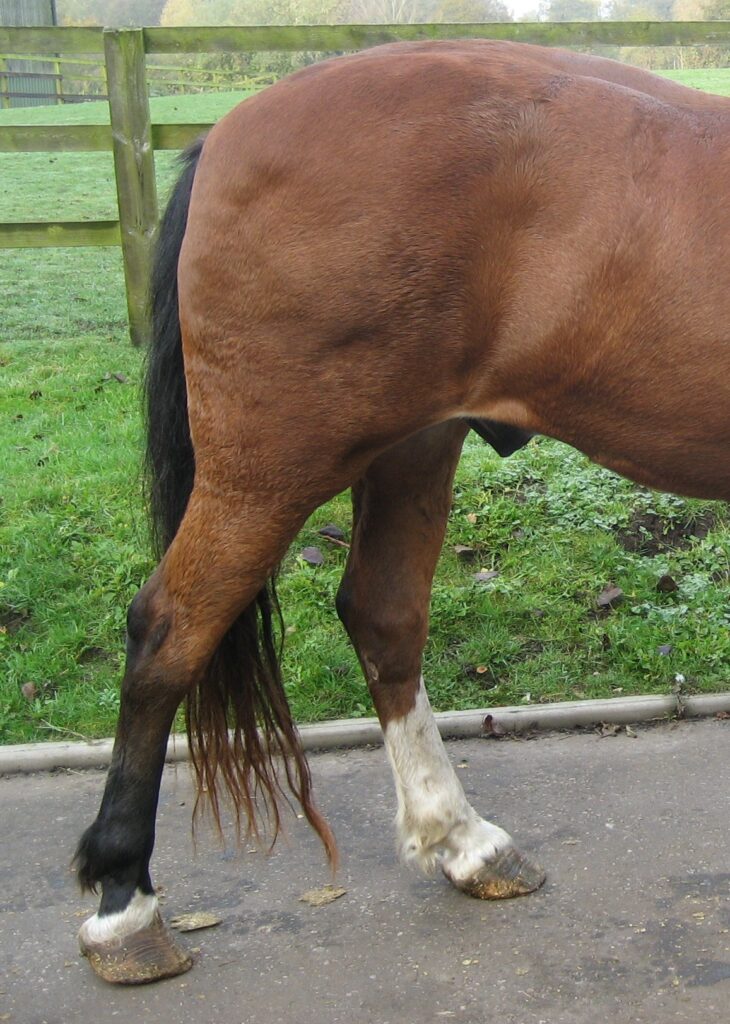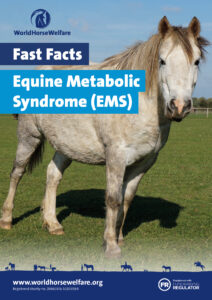What is Equine Metabolic Syndrome?
Equine Metabolic Syndrome (EMS) is a hormonal disorder in horses which is characterised by obesity, insulin dysregulation, and laminitis.
What causes EMS?
Both the horse’s genetics and their environment can cause EMS, as the biggest risk factor in developing it is obesity. Horses at risk of obesity may have a predisposition due to their breeding and genetics but obesity is also influenced by the horse’s environment and provision of a suitable diet. To find out more about managing horse’s weight and how obesity can affect horses, please see our Weight: Is your horse the right weight? Advice page.
Insulin is the hormone responsible for removing glucose from the horse’s bloodstream to store it as energy for later use. Horses with substantial fat deposits (e.g., those with a fat score of 4 to 5 out of 5) are more likely to suffer from insulin dysregulation because other hormones released by the fat lead to more insulin being produced than the horse needs. This is known as hyperinsulinemia and it is linked to higher risk of the horse developing laminitis, although the exact mechanism has not yet been identified.
What are the signs of EMS?
Typical signs that a horse has EMS include:
- Excess weight (a body condition/fat score of 4 or more out of 5)
- Abnormal fat deposits (e.g., pockets/bulges/pads of fat around the crest, behind shoulder, at the tailhead, above the eyes, around the sheath or mammary glands)
- Resistance to losing weight despite appropriate diet and exercise
- Lethargy
- Current or history of laminitis
- Infertility in mares
- High insulin levels (determined by a blood test)

What are the treatments for EMS?
Weight loss is the primary treatment for EMS. This includes feeding a high fibre, forage- based diet. To feed for weight loss, it’s recommended to feed 1.5% of the horse’s body weight in forage per day. This should be done under veterinary supervision, and the horse should be regularly weighed and fat scored to track progress.
Regular exercise is another key element of a weight loss programme and can include increasing the time spent moving and walking for those requiring lower intensity exercise, up to higher intensity exercise as the horse’s fitness improves.
We have a dedicated advice page all about weight management strategies for overweight horses, if you’d like more information on safely managing your horse’s weight loss.
Equine Metabolic Syndrome Fast Facts

This fast facts guide includes further information on:
- Risk factors and management of EMS
- When to call the vet and treatment of EMS
Popular advice in Health

Mites: how to treat them in horses
Find out how our experienced teams tackle this itchy problem in affected horses and ponies.

Sweet itch
Sweet itch is one of the most common allergic skin diseases affecting horses in the UK - learn how to prevent and manage it.
Other advice categories
All webinar categories:
Call our Advice Line
+44 (0)1953 497 238Not found the advice or answer you were looking for here? Then our Advice Line is available during office hours, or you can email us on education@worldhorsewelfare.org to let us know what topics you were looking for.


